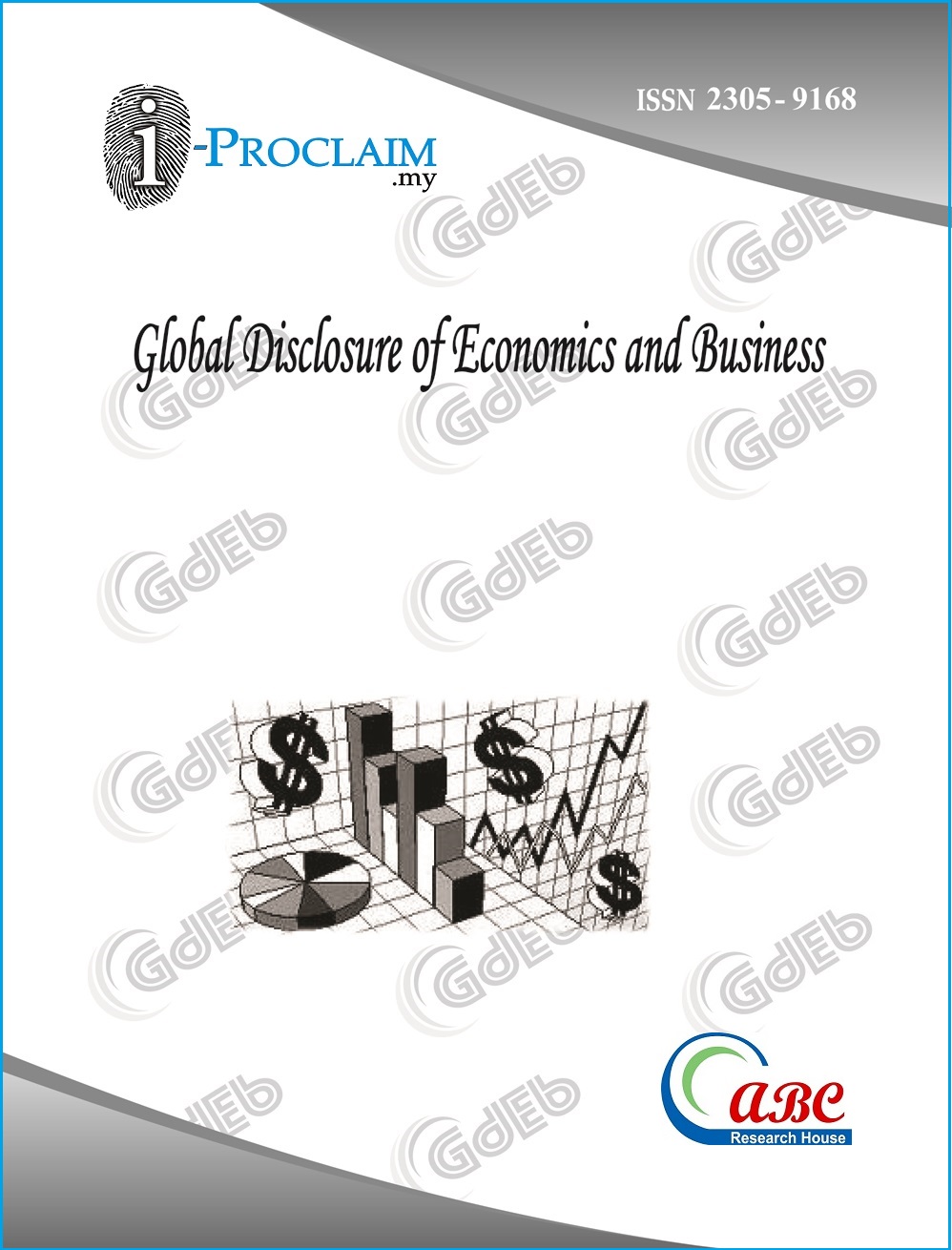Training for Cost-Effectiveness vs. Training as Tax Evasion Tool – A Study on Selected Private Companies in Bangladesh
DOI:
https://doi.org/10.18034/gdeb.v7i1.103Keywords:
Training, tax evasion, cost-effectiveness, budgetingAbstract
Bangladeshi organizations consider employee training as an indispensable strategic tool for enhancing employee’s performance. Although training seems to be an expense, it is regarded as an investment. Every company is increasing the amount of the budget on training programs showing the reason that training brings the competitive edge. The study is focused on analyzing the tendency of increasing the training budget to know whether it is an investment or an evasion medium of tax in Bangladesh. A survey has been administered to find the degree of effectiveness of training programs, the utilization of budget on training, the cost-effectiveness of training programs and the possibility of training programs used as a tax evasion medium in Bangladesh. We have collected data through a semi-structured questionnaire from a sample of 200 employees working in 20 private organizations located in Dhaka city. We have observed from our survey that most of the time training programs held in different organizations in Bangladesh are not always effective. Trainees are not getting the most out of it. Contrary to the expectation, the analysis showed that the training budget is not sufficient. Although companies are increasing the amount of the training budget every year, it is not enough to give best results. And the budget is not utilized effectively in many cases. For this, many company’s performance in cost-effectiveness of training is not satisfactory. The formal evaluation method is not followed in every company, and the training programs are not improved always. Every organization doesn’t conduct cost and benefit analysis of training programs. The study has also found that training can be used as a tax evasion tool and in many organizations, it is somewhat being used. Training program opens up the opportunity to include false expenses which increases the total cost. The result of increased expense is a decrease in taxable profit. We have used mean, standard deviation, variance, percentage analysis, hypothesis testing, etc. for statistical analysis.
Downloads
References
Baldacchino, G. (1995). Total quality management in a luxury hotel: A critique of practice. International Journal of Hospitality Management, 14(1), 67-78. DOI: https://doi.org/10.1016/0278-4319(95)00006-X
Black’s Law Dictionary (9th ed. 2009).
Butcher, K., Sparks, B., & McColl-Kennedy, J. (2009). Predictors of customer service training in hospitality firms. International Journal of Hospitality Management, 28(3), 389396. DOI: https://doi.org/10.1016/j.ijhm.2008.10.004
Conrade, G., Woods, R. H., & Ninemeier, J. D. (1994). Training in the U.S. lodging industry: perception and reality. Cornell Hotel and Restaurant Administration Quarterly, 35(3), 16-21.
Ely, J. (2009, Sep 11). Training: The race is never over. Hotel and Motel Management. Retrieved from http://www.hotelworldnetwork.com/
Enz, C. A., & Siguaw, J. A. (2000, Oct). Best practices in service quality. Cornell Hotel and Restaurant Administration Quarterly, 41(5), 20-29. DOI: https://doi.org/10.1016/S0010-8804(01)80002-1
Frash Jr., R., Kline, S., Almanza, B., & Antun, J. (2008). Support for a multi-level evaluation framework in hospitality training. Journal of Human Resources in Hospitality & Tourism, 7(2), 197-218. DOI: https://doi.org/10.1080/15332840802156949
Harris, K. J. (2007). Calculating ROI for training in the lodging industry: Where is the bottom line? International Journal of Hospitality Management, 26(2), 485-498. DOI: https://doi.org/10.1016/j.ijhm.2005.12.001
Haywood, K. M. (1992). Effective training: Toward a strategic approach. Cornell Hotel and Restaurant Administration Quarterly, 33(4), 43-52. DOI: https://doi.org/10.1177/001088049203300610
IRC v Willoughby [1997] 1 WLR 1071.
Kirkpatrick, D. (1996). Great ideas revisited. Training and Development, 50(1), 54-59.
Partlow, C. G. (1996). Human-resources practices of TQM hotels. Cornell Hotel and Restaurant Quarterly, 37, 67-77. DOI: https://doi.org/10.1177/001088049603700526
Phillips, J. J. (1996, Apr). How much is the training worth? Training and Development, 50(4), 20-24
Phillips, J. J. (1996, Feb). ROI: The search for the best practices. Training and Development, 50(2), 42-47.
Phillips, J. J. (1996, Mar). Was it the training? Training and Development, 50(3), 28-32
Prebble, John "Criminal Law, Tax Evasion, Shams, and Tax Avoidance: Part I Tax Evasion and General Doctrines of Criminal Law" 1996 2 NZ J Tax L & Policy 1
Prebble, John and Prebble, Zoe • The Morality of Tax Avoidance. (2010) 20 Creighton L Rev 101
Roehl, W. S., & Swerdlow, S. (1999). Training and its impact on organizational commitment among lodging employees. Journal of Hospitality & Tourism Research, 23(2), 176-194. DOI: https://doi.org/10.1177/109634809902300205
Rowden, R. W. (2001). Exploring methods to evaluate the return on investment from training. American Business Review, 19(1), 6-12.
Tracey, J. B., & Tews, M. J. (1995). Training effectiveness: Accounting for individual characteristics and the work environment. Cornell Hotel and Restaurant Administration Quarterly, 36(6), 36-42. DOI: https://doi.org/10.1177/001088049503600615
Walsh, K., & Taylor, M. S. (2007). Developing in-house careers and retaining management talent: What hospitality professionals want from their jobs? Cornell Hotel and Restaurant Administration Quarterly, 48(2), 163-182. DOI: https://doi.org/10.1177/0010880407300521
--0--










